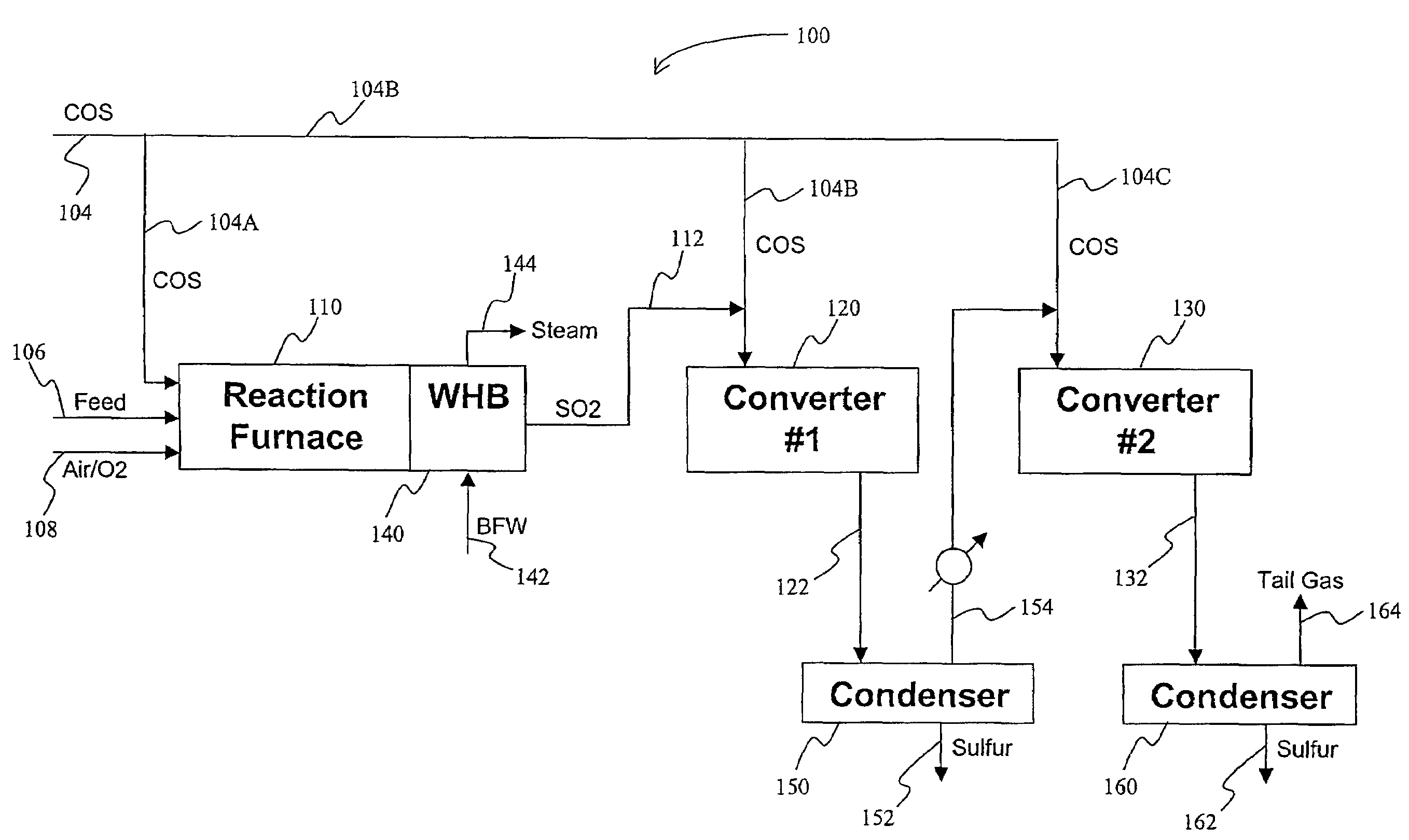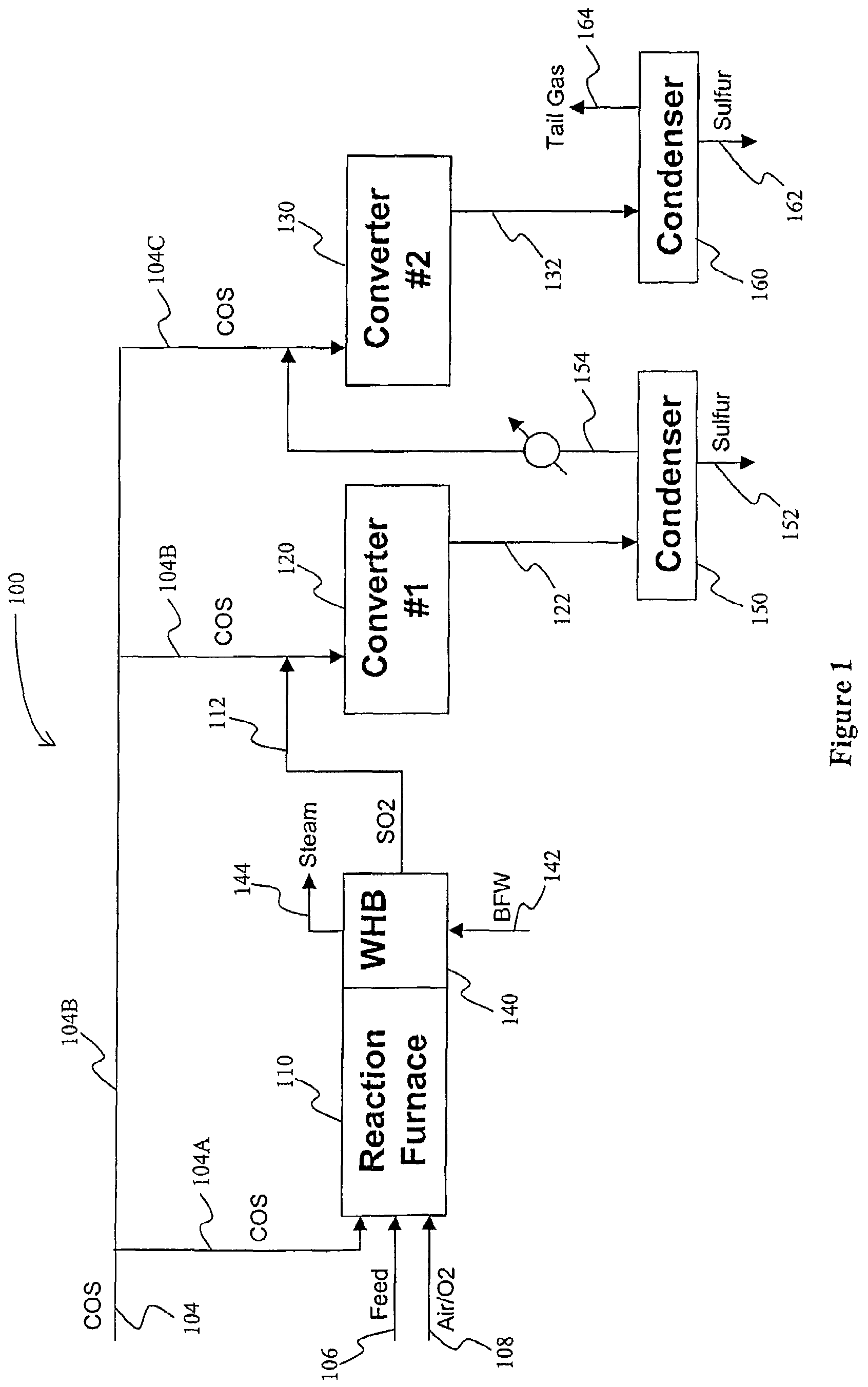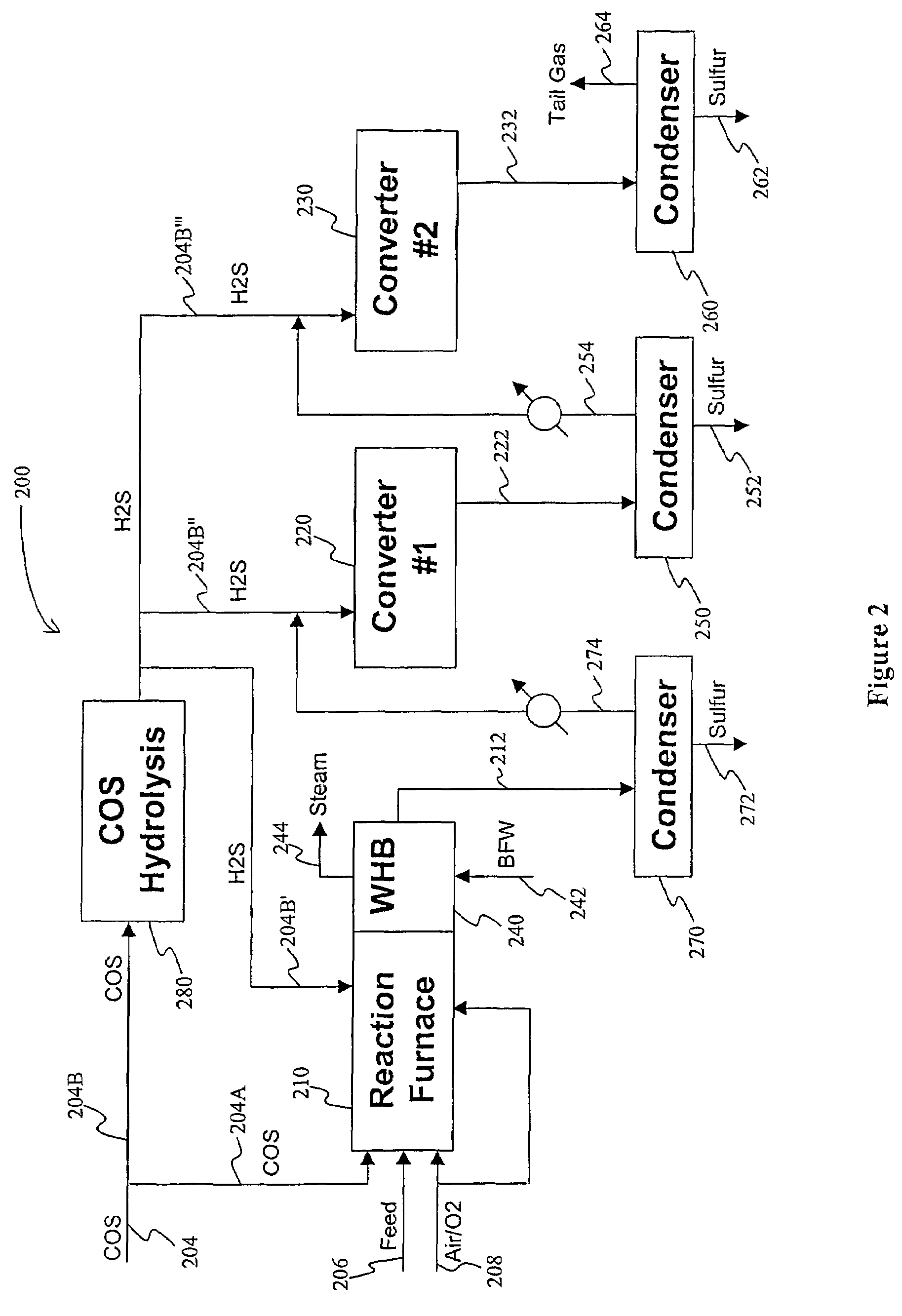COS-Claus configurations and methods
a technology of cos and configuration, applied in the field of cos-claus plant, can solve the problems of reducing the desulfurization efficiency, reducing the cos concentration, and generally requiring relatively high capital and operating costs
- Summary
- Abstract
- Description
- Claims
- Application Information
AI Technical Summary
Benefits of technology
Problems solved by technology
Method used
Image
Examples
Embodiment Construction
[0014]The inventors discovered that COS-containing streams may be fed to a Claus plant without loss of desired operating conditions, wherein one portion of the COS is fed to the reaction furnace for oxidation to sulfur dioxide, and wherein another portion is hydrolyzed to hydrogen sulfide (e.g., in a hydrolysis reactor or in the catalytic converter of the Claus plant), and wherein the so produced hydrogen sulfide and sulfur dioxide are reacted to form elemental sulfur.
[0015]It should be especially appreciated that using such configurations and methods, 90-98% of the COS in a COS-containing stream (Or even a substantially pure COS stream) can be converted into elemental sulfur while maintaining a Claus conversion environment. Moreover, and at least in some aspects, contemplated configurations allow operation of a Claus plant without the need for an upstream hydrolysis reactor, wherein the Claus plant receives substantial quantities (e.g., greater than 2 mol %) of COS.
[0016]In one pre...
PUM
| Property | Measurement | Unit |
|---|---|---|
| temperature | aaaaa | aaaaa |
| temperature | aaaaa | aaaaa |
| temperature | aaaaa | aaaaa |
Abstract
Description
Claims
Application Information
 Login to View More
Login to View More - R&D
- Intellectual Property
- Life Sciences
- Materials
- Tech Scout
- Unparalleled Data Quality
- Higher Quality Content
- 60% Fewer Hallucinations
Browse by: Latest US Patents, China's latest patents, Technical Efficacy Thesaurus, Application Domain, Technology Topic, Popular Technical Reports.
© 2025 PatSnap. All rights reserved.Legal|Privacy policy|Modern Slavery Act Transparency Statement|Sitemap|About US| Contact US: help@patsnap.com



